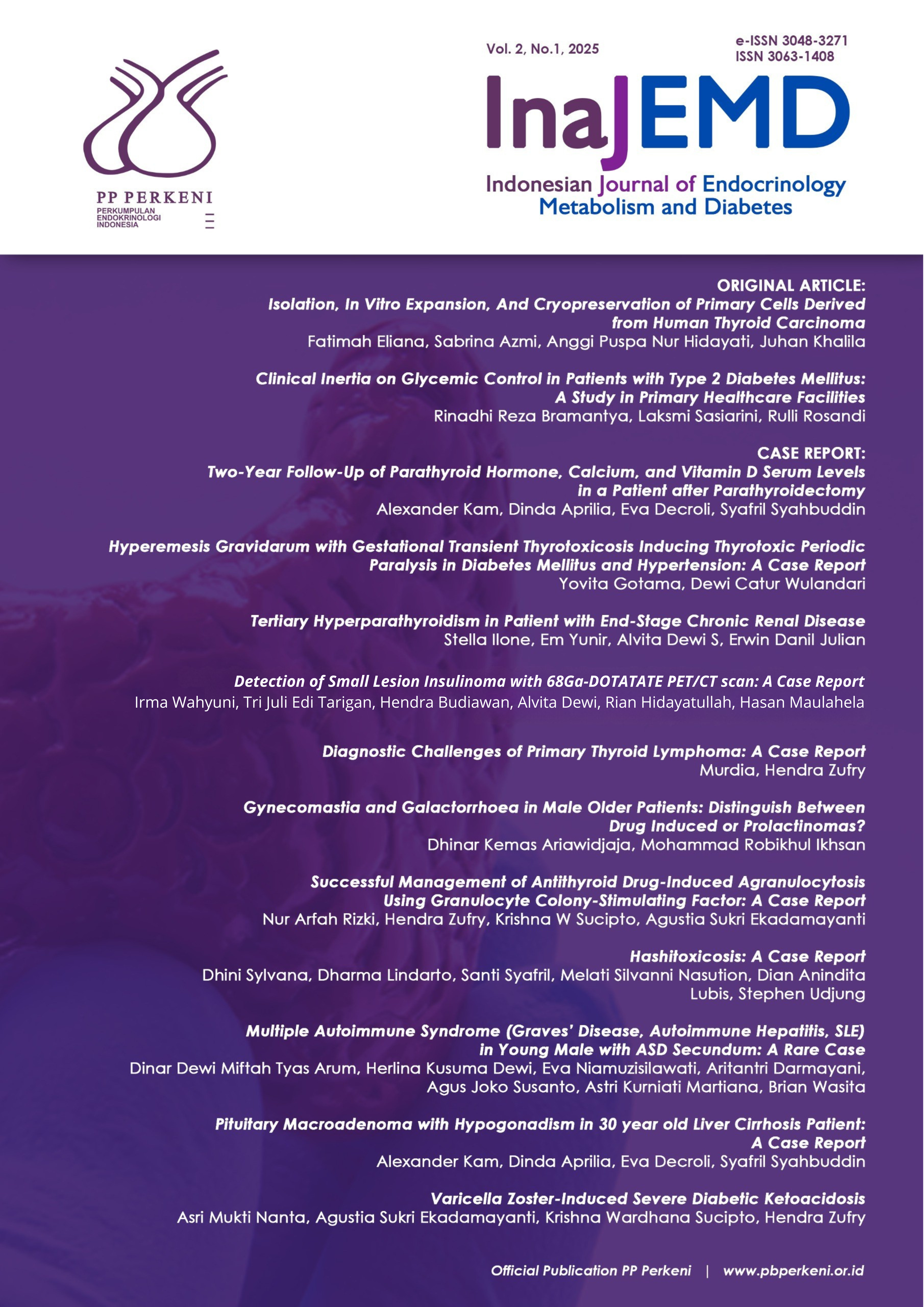Pituitary Macroadenoma with Hypogonadism in 30 year old Liver Cirrhosis Patient: A Case Report
Keywords:
pituitary macroadenoma, hypogonadism,, liver cirrhosis, therapeutic interventionAbstract
Pituitary macroadenomas can suppress pituitary hormone secretion, one of which is the gonadotropin hormone, causing hypogonadism. The condition of hypogonadism can increase the risk of NAFLD, which can then become liver cirrhosis. A 30-year-old man came to the hospital with decreased consciousness and hematemesis melena. From physical examination, laboratory, and pituitary MRI, the patient was diagnosed with pituitary macroadenoma, hypogonadotropic hypogonadism, primary hypothyroidism, acute adrenal insufficiency, and liver cirrhosis. The patient was given hydrocortisone therapy, correction of electrolyte levels, hypoglycemia protocol, levothyroxine 100 mg/day, and management of hematemesis melena. After that, Sustanon 250 mg was given every two weeks intramuscularly. The patient went home in good condition and was planned for neurosurgery consultation for transsphenoidal resection. After the injection of Sustanon, the patient experienced increased penile length and testicular volume. The condition of hypogonadism in patients with pituitary macroadenoma can be a risk factor for NAFLD, which can then progress to liver cirrhosis. NAFLD and liver cirrhosis also can cause hypogonadism in men by several mechanisms. The patient has been well-managed and experienced clinical improvement.
Downloads
Downloads
Published
Issue
Section
License
Copyright (c) 2025 InaJEMD - Indonesian Journal of Endocrinology Metabolism and Diabetes

This work is licensed under a Creative Commons Attribution-NonCommercial-NoDerivatives 4.0 International License.
Authors retain copyright and grant the Indonesian Journal of Endocrinology, Metabolism and Diabetes (InaJEMD) the right of first publication with the work simultaneously licensed under a Creative Commons Attribution-NonCommercial-NoDerivatives 4.0 International License (CC BY-NC-ND 4.0) that allows others to share the work with an acknowledgement of the work's authorship and initial publication in this journal.
© Indonesian Journal of Endocrinology, Metabolism and Diabetes (InaJEMD). Published by the Indonesian Society of Endocrinology (PERKENI).





